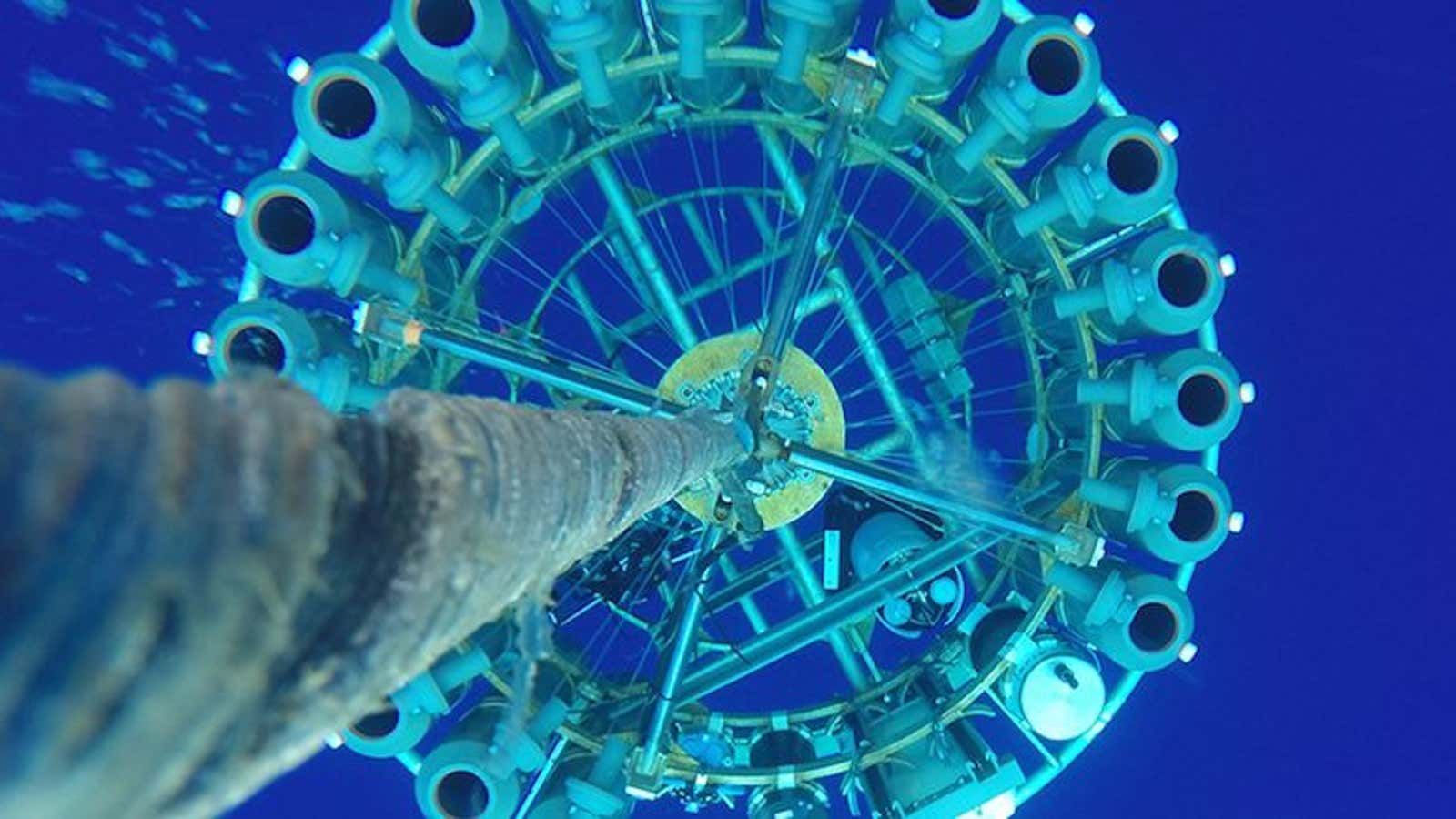One of the potentially devastating consequences of global warming is that the oceans are growing more acidic—but just how acidic has been difficult for scientists to measure. That may be about to change, as the XPrize Foundation’s year-long competition to develop sensors that can measure deep sea pH levels was won last night by Sunburst Sensors, a small technology company based in Missoula, Montana.
Ocean acidification may not be quite as familiar as global warming, to which it is closely related. But more acidic oceans—caused by carbon dioxide that is absorbed from the atmosphere—are jeopardizing marine ecosystems by eating away at coral reefs and making it more difficult for creatures to grow shells.
Fishermen, scientists, and policymakers in particular are deeply concerned about the sea’s changing pH levels, and they have lacked a way to reliably measure those levels at different depths. Current open-ocean tools are cumbersome and expensive, and their sensors only work down to depths of around 600 meters.
Enter the Wendy Schmidt Ocean Health XPrize, sponsored by the wife of Google chairman Eric Schmidt. The XPrize Foundation organizes several open competitions like this to spur innovation where the market forces aren’t getting the job done (paywall). Wendy Schmidt also sponsored the first ocean-related XPrize in 2011, putting up $1.4 million for whomever could invent the best new way to clean up oil spills.
The search for better ocean pH-monitoring technology attracted more than 70 teams of engineers. In early 2015, 18 of those teams delivered prototypes for testing, and the field was subsequently narrowed to five entrants.
“pH is one of the hardest chemical properties to measure in the ocean,” organizer Paul Bunje said last night at a ceremony in New York. But the threat of ocean acidification is too important to not monitor. “You can’t go to the hospital with a presumed fever,” he said, “and hope that the back of a doctor’s hand is enough.”
“We can’t wait for the market to demand that Sunburst Sensors make a deep-sea sensor,” Bunje told Quartz after the awards.
Sunburst won both of the grand prizes—one for the most affordable sensor, another for the most accurate, each worth $750,000—with two different sensors.Sunburst’s sensors are called the i-SAMI (“i” for inexpensive) and the t-SAMI (“t” for titanium). The devices draw in water samples, mix them with dyes, and shine lasers on them in a process known as spectrophotometry. To win the affordability category, a finished sensor had to cost less than $1,000.
“The fact that we’ve been in this business for a while helped,” said CEO Jim Beck. Instead of starting from scratch, the Sunburst team developed new iterations of sensors it already sold for commercial use. The ten-employee firm imported seawater to its land-locked lab in Montana to develop its sensors for the ocean (it also makes freshwater ones).
